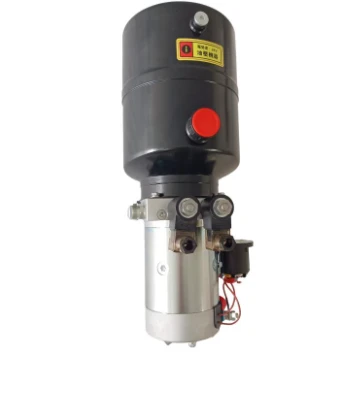Nov . 09, 2024 00:09 Back to list
Explore High-Performance Hydraulic Pull Cylinders for Your Industrial Applications
Understanding Hydraulic Pull Cylinders A Comprehensive Overview
Hydraulic pull cylinders are essential components in various industrial applications, offering effective solutions for tasks that require significant force in pulling operations. These devices leverage the principles of hydraulics, utilizing pressurized fluid to generate high force in a controlled manner. As industries evolve, the demand for efficient and reliable hydraulic systems continues to grow, making hydraulic pull cylinders an integral part of modern machinery.
What is a Hydraulic Pull Cylinder?
A hydraulic pull cylinder is a type of actuator that converts hydraulic energy into mechanical energy, specifically designed to pull loads. They usually consist of a cylinder housing, a piston, and hydraulic fluid that enables movement. When hydraulic fluid enters the cylinder, it pushes the piston, creating a pulling force that can be used to move loads or apply tension in cables, rods, or other components.
Key Components and Working Principles
1. Cylinder Housing The outer shell of the pull cylinder that contains the hydraulic fluid and provides structural support.
2. Piston A movable component within the cylinder that is driven by hydraulic fluid. The surface area of the piston determines the force output of the cylinder.
3. Hydraulic Fluid This is the medium that transmits power within the system. It is usually oil-based, selected for its lubricating properties and ability to operate under high pressure.
4. Pressure Source A pump is needed to provide the hydraulic pressure necessary for the operation. The pump moves fluid from a reservoir into the pull cylinder.
When pressure is applied, the hydraulic fluid enters the cylinder, prompting the piston to move. The amount of force produced is determined by the pressure of the fluid and the surface area of the piston, following the principle of Pascal's Law. This allows hydraulic pull cylinders to exert substantial pulling forces, making them suitable for heavy lifting and holding applications.
Applications of Hydraulic Pull Cylinders
Hydraulic pull cylinders are widely used across a variety of industries, including
1. Construction and Heavy Machinery They are employed in cranes and excavators for lifting and moving heavy loads.
2. Manufacturing In assembly lines, these cylinders assist in positioning and securing parts during production processes.
3. Automotive Hydraulic pull cylinders are used in vehicle repair shops for pulling engines and other heavy components during service.
hydraulic pull cylinder products

4. Marine Applications They are utilized in shipbuilding and repair for lifting massive hull sections.
5. Mining In this sector, they assist with the movement of large machinery and support drilling operations.
Advantages of Hydraulic Pull Cylinders
1. High Force Capability Hydraulic pull cylinders can generate substantial pulling forces, making them suitable for heavy-duty applications.
2. Precision Control Operators can finely control the pulling motion, allowing for precise positioning.
3. Durability Often designed to withstand harsh conditions, hydraulic pull cylinders can offer extended service life with minimal maintenance.
4. Versatility They can be integrated into various systems, providing significant flexibility across multiple applications.
Choosing the Right Hydraulic Pull Cylinder
When selecting a hydraulic pull cylinder, several factors must be considered
1. Force Requirements Assess the maximum load that needs to be pulled.
2. Stroke Length Determine the required distance the piston needs to travel.
3. Operating Pressure Make sure the cylinder can withstand the pressure produced by the hydraulic system.
4. Environmental Conditions Consider factors like temperature, exposure to chemicals, and humidity, which can affect performance.
In conclusion, hydraulic pull cylinders are vital tools in the modern industrial landscape, providing powerful, precise pulling capabilities across various applications. With advancements in hydraulic technology, these cylinders continue to evolve, enhancing efficiency and reliability in industries worldwide. Understanding their design, operation, and applications is crucial for anyone involved in fields that depend on heavy lifting and mechanical movements. Whether in construction, manufacturing, or any other heavy-duty industry, hydraulic pull cylinders play an indispensable role.
-
Fork Lift Power Units - Hebei Shenghan | Efficiency, Reliability
NewsJul.13,2025
-
1.5-Ton Turbocharged Cylinder-Hebei Shenghan|Hydraulic Solution,Energy Efficiency
NewsJul.13,2025
-
Auto Hoist Power Units-Hebei Shenghan|Efficiency&Industrial Lifting
NewsJul.13,2025
-
Double Acting Power Units-Hebei Shenghan|Hydraulic Solutions,Industrial Efficiency
NewsJul.13,2025
-
1.5 Ton Lifting Cylinder 70/82-40-290-535 - High-Performance Hydraulic Solution | Hebei Shenghan
NewsJul.13,2025
-
Fork Lift Power Units - Hebei Shenghan | Efficiency&Reliability
NewsJul.13,2025
